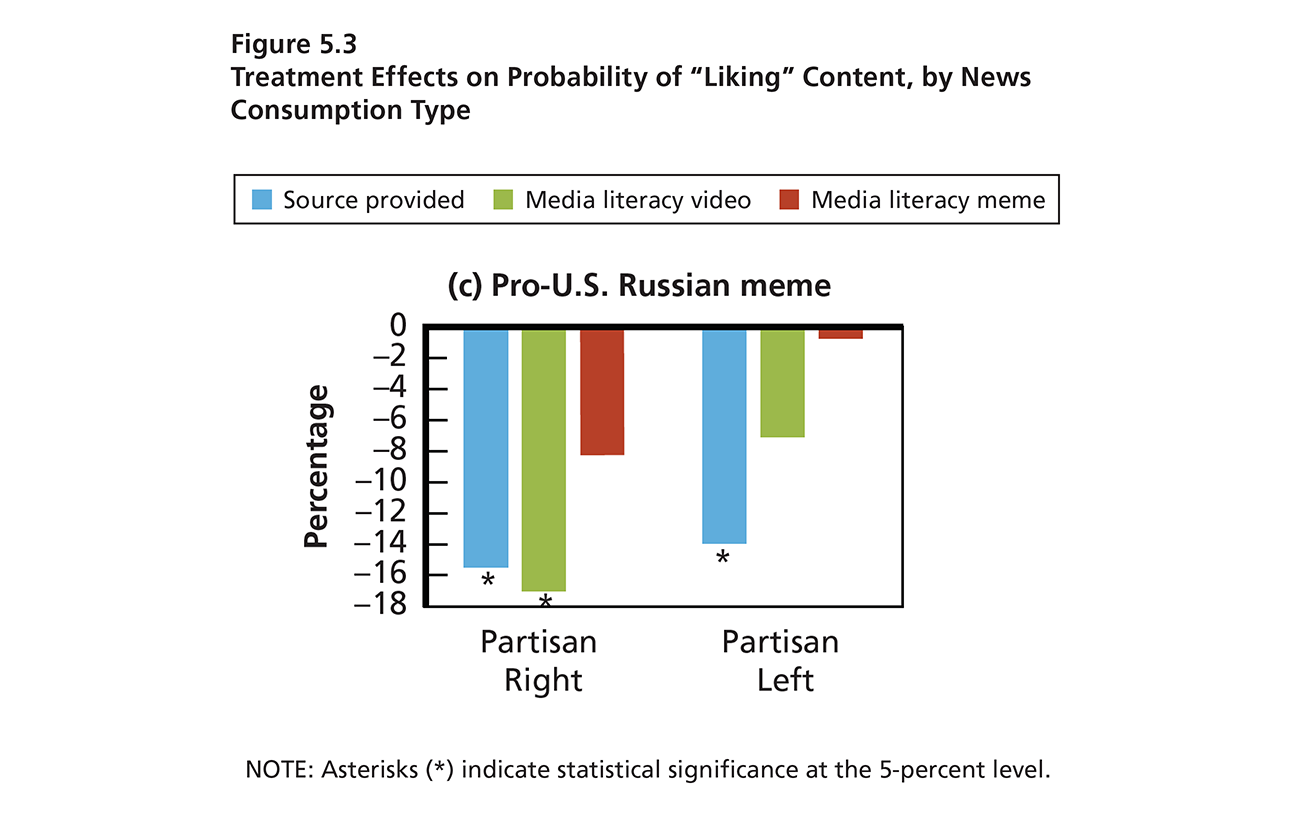Randomized control trial finds IREX's media literacy messages to be effective in reducing engagement with misinformation

The Kremlin sponsored an aggressive propaganda campaign using social media to influence the 2016 U.S. elections. In an effort to determine the impact of the misinformation campaign on voters, the RAND Corporation, in partnership with IREX, conducted the first study to use a randomized control trial to understand the effect media literacy messaging could have on social media users. With short, social media–sized media literacy content, RAND tested how using various interventions and revealing the source of the content changed audience reactions.
The report, Russian Propaganda Hits Its Mark: Experimentally Testing the Impact of Russian Propaganda and Counterinterventions, utilized media literacy messages developed as part of IREX’s Learn to Discern (L2D) approach and revealed the following three important findings about the way propaganda influences audiences and the role of media literacy in countering manipulative information in the United States.
- Kremlin propaganda evokes emotional responses. The results showed that Kremlin propaganda content is effective because it generates a strong emotional response with a stark partisan divide. The emotional response drives behaviors of “liking” and “sharing” that cause misinformation to rapidly spread throughout social media channels. The finding validates L2D’s emphasis on emotional awareness and thought-driven decision-making to combat the spread of misinformation.
- Exposure to media literacy can shift the behaviors of hard-to-reach groups. The brief media literacy interventions used in the study had their strongest effects on partisan news consumers. According to the report, “Exposure to the media literacy video significantly reduced self-reported ‘likes’ for pro-U.S. and politically right-leaning Kremlin propaganda among those in the Partisan Right group.” Often, audiences with the most partisan views are considered “hard to reach and hard to teach.” With less than two-minutes of exposure to media literacy messaging on social media, partisan right and partisan left social media users were 8%–17% less likely to “like” a Kremlin misinformation meme. The reduction could prove critical in a close election.

- Labeling has a positive effect on reducing the probability of liking/sharing in partisan audiences. The report highlights that labeling propaganda with its source also reduces the likelihood that partisan participants share items. Because of the speed at which information circulates, labeling and media literacy interventions are complementary. By the time a piece of misinformation is identified and labeled as such, it has often already spread virally and reached its intended target.
It is encouraging that IREX’s approach to media literacy may offer users potential emotional awareness and emotional regulation tools to resist the urge to react to—and spread—Kremlin-sponsored misinformation. Further research is needed to understand more about specific types of media literacy messages, the audiences they best influence, and the effects of different levels of exposure.
For more information, please contact Katya Vogt, IREX’s global lead for media and information literacy Initiatives, at kvogt@irex.org.